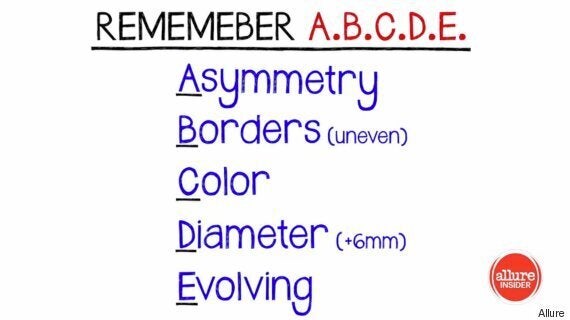Moles: they sprout up on your skin unexpectedly (and often very much unwanted).
But what exactly are they? And are they dangerous?
Dr Ava Shamban explains that "moles are the most common skin growth that we have on our bodies".
SEE ALSO:
Skin Cancer: How To Spot The Signs
Skin Cancer Cases Up By 41% - Experts Blame Cheap Holidays
New Pill Could Help People With Advanced Skin Cancer Which Affects 13,000 People A Year
A mole is a collection of cells called Nevus cells. The reason why these cells collect is a complete mystery, but they can collect absolutely anywhere on the body.
So you can end up with moles in all manner of places, including on your palms, bum cheeks and even the inside of your ears.
Dr Shamban highlights the importance of knowing about every single mole on your body so that you can monitor its appearance, as certain moles can lead to skin cancer.
Dr Shamban recommends checking your moles once a month with the following formula to ensure that you don't miss any changes which could flag up skin cancer.

Remember A.B.C.D.E, she says, which means you need to look out for asymmetry of moles, weird borders, variations in colour, increased diameter (anything that is bigger than 6mm is a cause for concern) and evolution - if it starts to bleed, you definitely need to get it checked out.
If you have a history of melanoma in your family, which is the most serious type of skin cancer, then Dr Shamban says it's even more crucial for you to check your moles regularly as your risk is increased.
And if you want to get a mole removed but are concerned it's going to involve some big, scary operation then fear not. You have nothing to worry about.
It's a quick and simple procedure, says Dr Shamban, which involves numbing the area with local anesthetic, cleaning the skin and then wither freezing or shaving off the mole. Et voilà! No more moles.
Finally, the question we've all been too afraid to ask - are moles the same as freckles?
"Good question," says Dr Shamban. "But no, they're not."